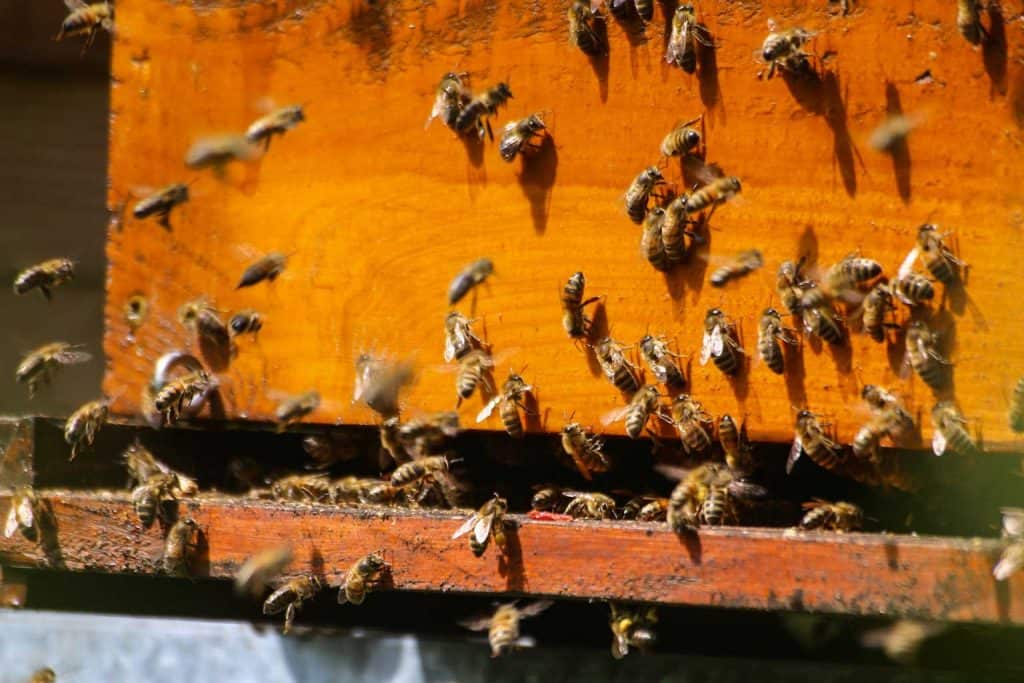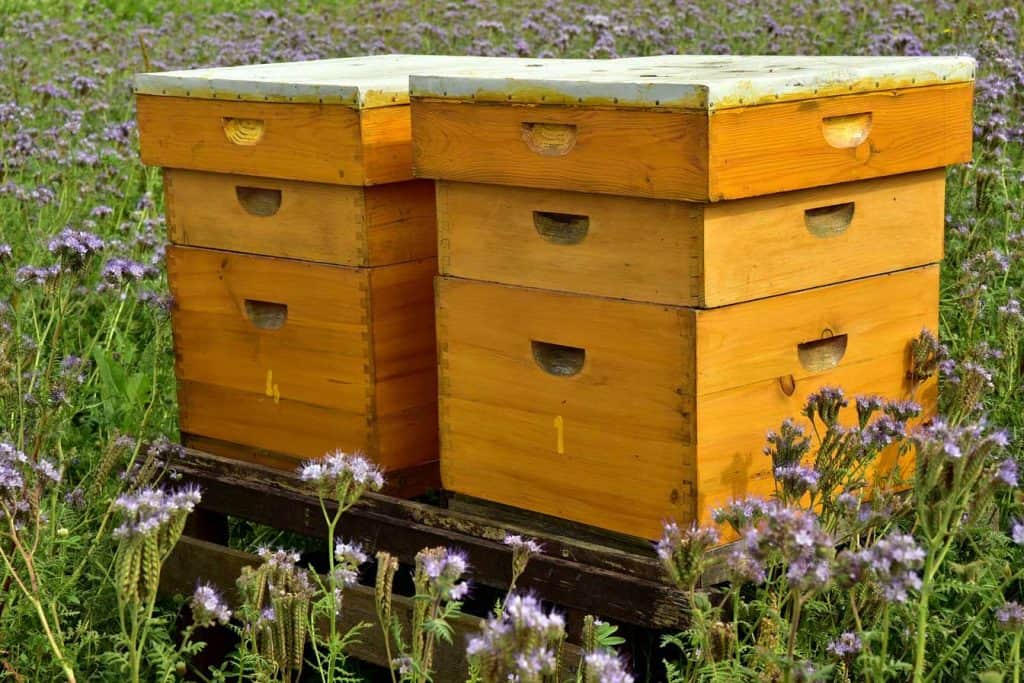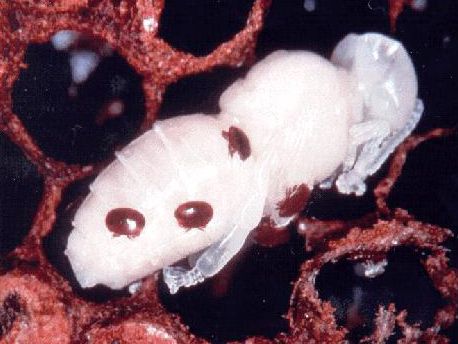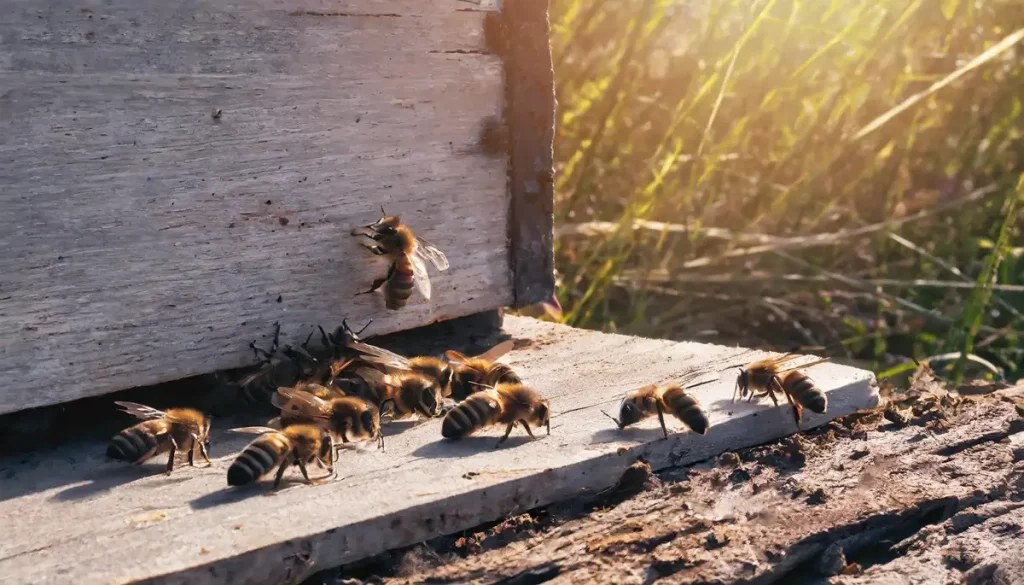Table of Contents
Bees crawl on the ground often due to exhaustion or when they are nearing the end of their life. They may be struggling from a lack of energy after failing to find sufficient nectar, or they might be disoriented due to exposure to pesticides. Additionally, environmental factors like cold temperatures can weaken bees, making flight difficult and causing them to crawl. Lastly, older bees sometimes crawl on the ground when their wings are too worn out to fly.
In the below paragraphs, we will take a more detailed look at this topic.
What’s up when your bees don’t buzz? You may notice it at any time, and it can happen for any number of reasons. Indeed, one of the commonest – and commonly alarming – phenomenon that beekeepers, amateur and professional alike, will notice is a group of bees that don’t seem to want to fly. Typically found on the ground close to the hive, flightless crawling bees (imaginatively dubbed (‘crawlers’) are unfortunately a definite indication that something is wrong. Finding out just what the matter is, however, can be a tricky business.
Crawlers can appear at any time of year, although they are most commonly found during the fall. You may find them creeping across the landing board of your hive, on the ground itself, or clinging to stalks and blades of grass. The numbers can vary from only a few to hundreds of colony members. Very often the bees themselves seem perfectly healthy upon inspection, but in some cases you may be able to spot the deformed wings that are rendering them unable to fly.
The condition, number, time of year, and appearance of crawlers vary so much simply because the reason for being crawlers can vary widely as well. Finding out precisely what is going on takes care, close inspection of a number of variables, and a healthy amount of research. Whatever the reason for your crawlers though, the problem should not be ignored as in the most severe cases it can indicate an imminent colony collapse.
What can be said for sure is that a crawling bee is not a healthy bee. Diseases, malnutrition, environmental factors, and genetic weakness are all potential reasons for any unhealthy mass of bees. Finding out just what is making the bees sick may indicate the reason for your crawlers. Nevertheless, it should be kept in mind that discovering what your bees are suffering from does not necessarily tell you why.

Possible Reasons for Crawling Bees
Finding out just why your bees are crawling on the ground is the first step to finding out just what has to be done to solve the problem. The situation is rarely hopeless, but action should be taken upon the first sight of any crawlers. Below I have listed some possible reasons why your bees are crawling on the ground, as well what this can mean for the colony as a whole.
There are certain things you should look for in each case. The first step upon spotting any crawlers should be to inaugurate a classic process of elimination by methodically checking for each of the tell-tale signs that will help you identify what’s going on. Some of the causes for crawlers may not be easily discernible but by ruling out other causes you could ultimately settle on the true reason.
Unfortunately, it may also be the case that you simply cannot find out what is causing your crawlers. The reason for this is that there is actually some debate among apiology experts regarding several of the purported causes. This has led to much confusion and certain misconceptions among beekeepers, especially since common wisdom takes a while to catch up with new scientific discoveries. You should be ready to accept that the cause of your crawler bees may ultimately remain a mystery.
Bees Expelled from the Hive
A common cause of crawling bees is as simple as hive expulsion. This is a natural process, and if you can determine that this is what is causing your crawlers, the outlook for the survival of your hive is good. The first thing to look for is whether your crawlers are drones or worker bees.
At the end of the season, it is a fairly typical occurrence for drone bees to be expelled from the hives and essentially left for dead. This is simply a matter of hive economy and concerns the size of a hive’s nectar and pollen stores and that point in the year when replenishing them becomes impossible. It is normally the least productive drone bees that are expelled from the hive. In practice, this means those that are least healthy.
The crawlers that you might see as a result of hive expulsion will be starving, which is the reason they can no longer fly. Thus, you should pay heed to the time of year and the type of bees you find. If the bees are exclusively or overwhelmingly drones and it happens to be the fall, then there’s a good chance that hive expulsion is the reason for your crawlers.
- Carter, Anthony (Author)
- English (Publication Language)
- 194 Pages - 02/28/2024 (Publication Date) - Independently published (Publisher)
If the bees are not drones or it is another time of year, then you can reliably rule out this reason and investigate other potential causes for your crawlers.

Injured and Starving Bees
As mentioned above, the reason crawlers cannot fly is usually that they are starving, have low energy, or are injured in some way. In the natural course of a bee’s life, there are many physical hazards that could cause this. To ascertain injury or starvation as the cause for your crawlers, you will primarily be looking for only a small number. If there are a lot of crawlers, then you can reliably rule this out as a cause.
Thankfully, if injury or general starvation is the cause of your crawlers and there is greater underlying cause, then this can be taken as good news. As they say, accidents will happen but there’s little chance it will affect your bees in any great numbers. As a rule of thumb then, if there are simply not that many crawlers then you need not worry too much.
Pesticides Causing Bee Crawling
The proliferation of pesticides around many rural areas where beekeeping and farming is practiced on a larger scale has been known to have a seriously adverse effect on local bee colonies. Pesticides are often designed to kill off insect life and very often there is no discrimination between actual pests and beneficial insect life such as bees.
The effects of pesticide poisoning are very often dramatic, with signs including a great many dead bees with extended tongue or dying bees displaying spasmodic movements or spinning. If your bees are simply crawling but seem otherwise unharmed, then the cause is likely not to be pesticide poisoning. Similarly, if there aren’t many crawlers, then pesticides are likely not the culprit as this usually affects large numbers of bees or even the whole colony. In addition, if your crawlers all happen to one caste of bee (nearly always drones) then pesticides are probably not to blame.
That being said, this does not hold true with 100% consistency. Sometimes pesticides may indeed be the blame for your crawlers, especially if the level of poisoning is not particularly severe. It is important therefore to check if pesticides are actually being used in your area. If so, there is a possibility that they are indeed harming your colonies.
Viruses and Varroa Mites Might Be Causing Crawling Bees
One of the most infamous bee viruses that will very definitely cause crawlers is the deformed wing virus. The clue is in the name when it comes to checking whether or not this is what is causing your bees to crawl on ground rather than go about their normal duties.
Unlike some other bee problems that can be identified by simple inspection, deformed wing virus is not hard to spot. Affected bees will have noticeably deformed wings, often appearing shriveled and stunted and nothing like the shape and size of the wings of a healthy bee.

There are many other viruses that may have a noticeable effect on your bees as well. The most prominent among these is the bee paralysis virus, which will sap the energy from your bees and lead to expulsion from the hive and, accordingly, crawlers.
Crawling happens for several reasons, so you should not assume that even the presence of clearly malformed bees is down to viruses; all such bees will be expelled from the hive in any case and even healthy bees can degenerate due to malnourishment once expelled from a hive for, say, scarcity in food stores.
There is a strong correlation between viruses and varroa mites, so doing a hive inspection for these parasites is a good first step. Be careful to inspect closely, as sometimes the mites can be hidden pretty effectively upon a bee’s body.
Varroa mite numbers typically spike in fall, which is precisely when most crawlers are discovered. Nonetheless, keep in mind that there are several other reasons associated with this time of year that could also be causing your crawlers.
Crawling Bees Caused by Tracheal Mites
The other infamous parasite that has been traditionally known to affect the health of bee colonies is the tracheal mite. There is no firm consensus that tracheal mites cause crawlers though, and anecdotal evidence as well as general trends would seem to suggest that they do not.
For one thing, the proliferation of acaricides usually designed to combat varroa mite has led to the widespread disappearance of tracheal mites across large areas of the U.S. And while the incidences of tracheal mite infection have significantly decreased, cases of crawlers are on the rise.
Whether the mites are causing your crawlers or not, if you correctly diagnose a tracheal mite infestation, then dealing with it is still wise and will certainly not do any harm.
Why Do Bees Crawl on the Ground – Conclusion
Ultimately, with the many different causes of crawlers comes many different symptoms to identify. This makes it possible to perform a fairly rigorous assessment of your hive, ruling out possible causes as you go.
Finding out the true reason (or combination of reasons) is an important first step to combatting the problem. Thereafter, the solution should become obvious, whether it be virus treatment, a sugar roll for mite counting, or an alcohol wash of your hive. There are some cases where your colony may unfortunately have already sunk into terminal decline. Yet finding out what is going on is the chance you have to deal with the problem.
Looking to up your beekeeping game? Check out our latest product recommendations so you can take things to the next level!
Introducing The Top 12 Best Beekeeping Veils For 2024
Introducing The Top 20 Best Beekeeping Gloves For 2024
Introducing The Absolute Best Beekeeping Suits For 2024
The 15 Top Beekeeping Books for 2024
The Top 11 Honey Extractors for 2024
The Top 12 Mason Bee Houses for 2024
Beekeeping Disclaimer:
Beekeeping, like any agricultural activity, involves inherent risks. It is important to understand these risks and take appropriate measures to mitigate them.
Potential risks associated with beekeeping include:
- Bee stings: Honey bees are generally not aggressive but can become defensive if they feel threatened or their hive is disturbed. Bee stings can cause allergic reactions or even anaphylaxis in some individuals, which can be life-threatening. It is important to wear protective clothing and follow best practices when handling bees to minimize the risk of stings.
- Diseases and pests: Bees can be vulnerable to various diseases and pests, including mites, viruses, and bacterial infections. These can have significant impacts on bee colonies, leading to reduced honey production or even colony collapse. It is important to monitor hives regularly and take appropriate measures to prevent and treat diseases and pests.
- Weather conditions: Extreme weather conditions, such as drought or cold temperatures, can affect the health and productivity of bee colonies. It is important to ensure that hives are appropriately sheltered and provided with adequate food and water.
- Environmental hazards: Bees can be affected by environmental hazards such as pesticide exposure, pollution, and habitat loss. It is important to be aware of these hazards and take appropriate measures to protect bee colonies and promote healthy environments for bees.
- Legal requirements: Beekeeping may be subject to local, state, or national regulations, such as registration or inspection requirements. It is important to be aware of these requirements and comply with them.
While beekeeping can be a rewarding and enjoyable activity, it is important to be aware of the potential risks and take appropriate measures to mitigate them. By following best practices and staying informed about the latest developments in beekeeping, beekeepers can help ensure the health and productivity of their hives and contribute to the well-being of bee populations worldwide.
Last update on 2024-04-26 / Affiliate links / Images from Amazon Product Advertising API



